Introduction:
When you think of the country of Japan, what comes to your mind first? Does your mind conjure up visions of the exquisite Japanese cuisine, the rich heritage of the country’s art scene, or the picture perfect postcard view of Mount Fuji? Manga? Anime? Earthquakes(!)? While these are all equally delightful (or not for some), for us personally hands down, Japan is synonymous with the Cherry Blossoms.
Update 2024:
The cherry blossoms are in full bloom around April 18th – 25th 2024. The flowers petals have started falling from April 25th 2024 and we think it will probably last one more day of two.
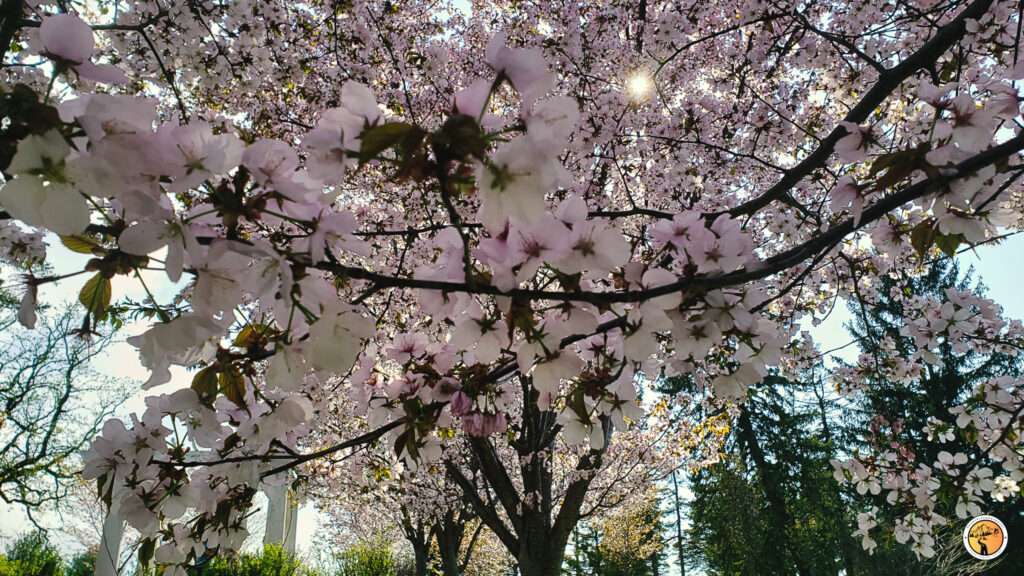
Traditional Perspective:
These gorgeous flowers are called “SAKURA” in Japan. According to Japanese Tradition, the flowers symbolize the fleeting nature of life. This is because, once in bloom, these iconic flowers don’t stick around for a long time. But historically, that’s part of their allure. The Japanese counteract this notion of imminent decay with “HANAMI“, a long-standing centuries old tradition of gathering beneath the blossoms with music, food and friends to celebrate rather than mourn the fleeting nature of life. Hanami is literally a flower viewing party and many people make a picnic out of the event! In fact, at late-night picnics, known as “YOZAKURA“, the Japanese hang paper lanterns on cherry blossom trees to illuminate them and it is a spectacular sight.
Japan might be the best-known destination for cherry blossoms, but here in the United States there are parks, gardens, and scenic drives where you can see these pale pink flowers. Washington DC might be the most famous one, but another underrated but beautiful location is Como Park, a hidden gem of the Twin cities of St Paul-Minneapolis.
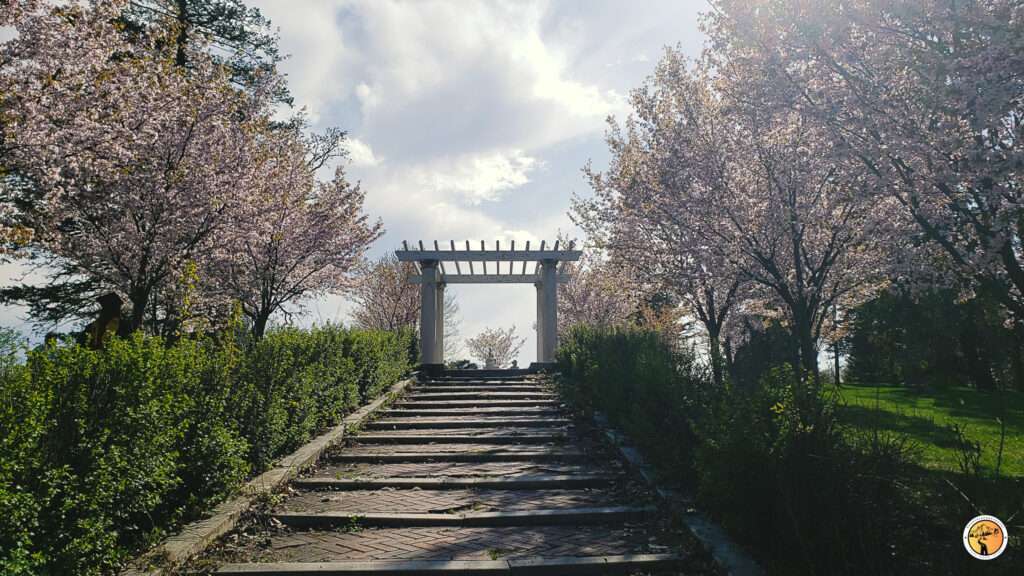
Minnesota Location:
You can see the cherry trees near the Como Park Zoo & Conservatory Butterfly Parking Lot in Roseville, MN. Roseville is a suburb of Minneapolis-Saint Paul. If are not familiar with Como Park and don’t know where these trees are, the closest landmark is the Global Harmony Labyrinth and the Mannheimer Memorial.
The trees that line the Mannheimer Memorial steps and up the top of the hill were a gift from the Japanese government to the city of St. Paul in 2012. They were specially selected to withstand Minnesota’s harsh winters.
Address:
Como Park Butterfly Lot ==> 1237-1231 Kaufman Dr, St Paul, MN 55103.
Historical Significance:
The Mayor of Tokyo, Japan gifted 3020 cherry trees to Washington, D.C. on March 27th 1912 as a symbol of Japanese American friendship. The National Park Service (NPS) website has done a splendid job of capturing the fascinating story and timeline of how this came about. Read this in this link below:
https://www.nps.gov/subjects/cherryblossom/history-of-the-cherry-trees.htm
In 2012, these trees were given to 38 cities in the US in honor of the 100th anniversary of the original gift. One of those lucky cities was St Paul and 20 of these trees were donated to it. In 2015, the Sakura cherry trees were named “LANDMARK” Trees in Saint Paul for their outstanding quality, historical value, and significance. The Sakura trees are unique and not just for their beauty and were selected to withstand Minnesota’s harsh winters by the Department of Forest Resources at the University of Minnesota. The specialized tree, the Sargeant Cherry Spring Wonder Hokkaido Normandale, was grown from seeds taken from the northernmost island of Japan that has a similar climate to Minnesota.
Life Cycle of Cherry Blossoms:
We have regularly visited Como Park every year since we moved to Minnesota. During our first few visits, we were disappointed to either go a little early (when the buds were just sprouting), or a little late (just as the flower petals fell off). This was incredibly disheartening and we had to endure the long wait till the next spring. In order to avoid that disappointment, we have provided a short Botany lesson on the Lifecycle of Cherry Blossoms.
There are several stages to the bloom of a cherry blossom tree, but the whole process is relatively brief and in a constant state of transition. Feel free to skip over this section, if science doesn’t interest you. But be forewarned though: Trying to time the Cherry blossoms can be very tricky and might require more than one visit. Knowing this Lifecyle, you can plan your trip better!
While it’s remarkable how the trees bloom at roughly the same time, not every tree blooms at precisely the same time. One tree might start blooming while the one right next to it is still several days away. There can even be variations on different branches of the same tree. The process will start with some scattered trees getting a jump on the others. Once the flowers come out they typically last a week or two. Precisely how long the flowers stay out varies, depending heavily on the weather. In hot, rainy, windy, and stormy weather they’ll go more quickly. In cool, calm, and dry conditions they hang around longer.
Let us look at each season in detail…
SPRING:
Spring is where the majority of the action takes place. The buds start to grow in Spring and there are 5 Stages of Bud Development:
- Stage 1: Green colored buds appear in late February and early March (but for Minnesota it is late April to early May).
- Stage 2: Florets become visible and usually this means that we are about 3 weeks from full bloom.
- Stage 3: The buds swell, indicating that full bloom is about 2 weeks or so.
- Stage 4: The lengthening of the flower stalks, also known as peduncle elongation, occurs in this stage. By this stage, we are really close (about a week) to Peak bloom.
- Stage 5: Puffy pale pink or white flowers emerge. By this stage, we are only about 4-6 days until peak bloom.

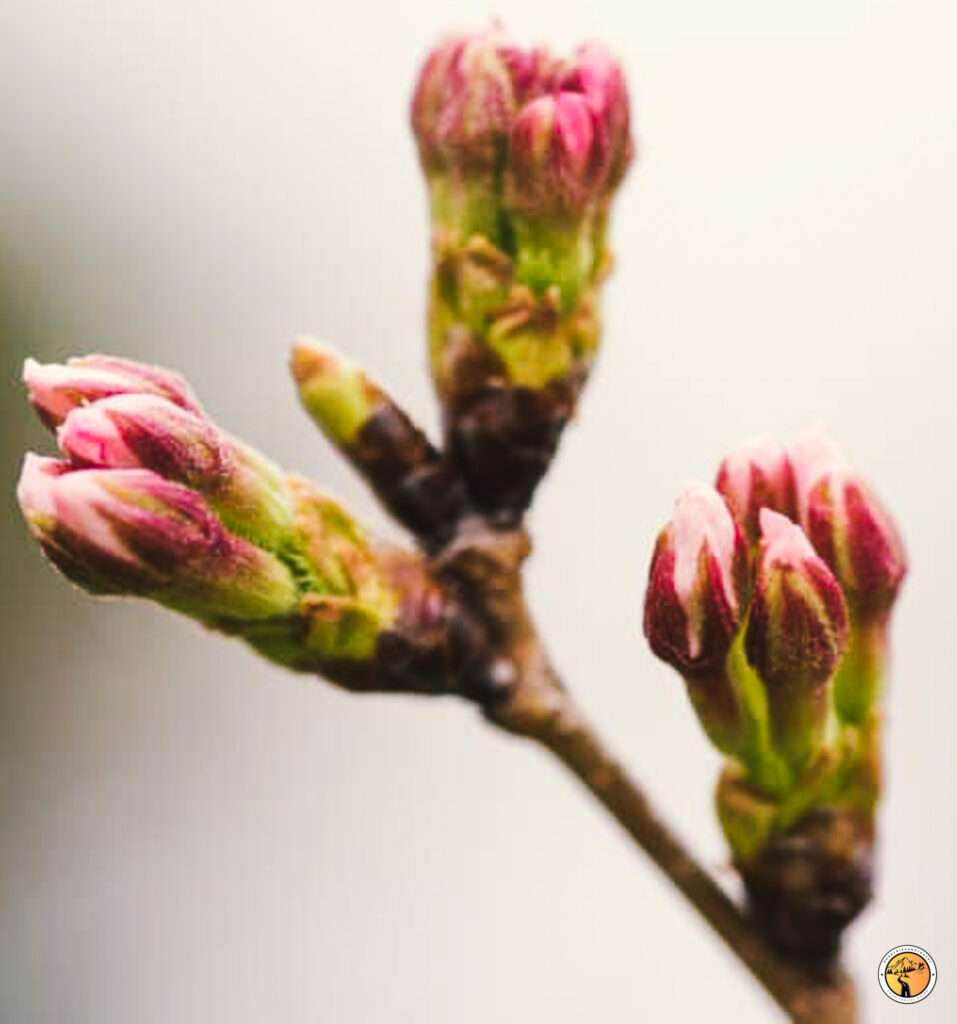
Blooming Period:
The blooming period begins a couple of days before the Peak bloom and can last as long as two weeks. The blooming period varies in length depending on rain, temperature and wind.
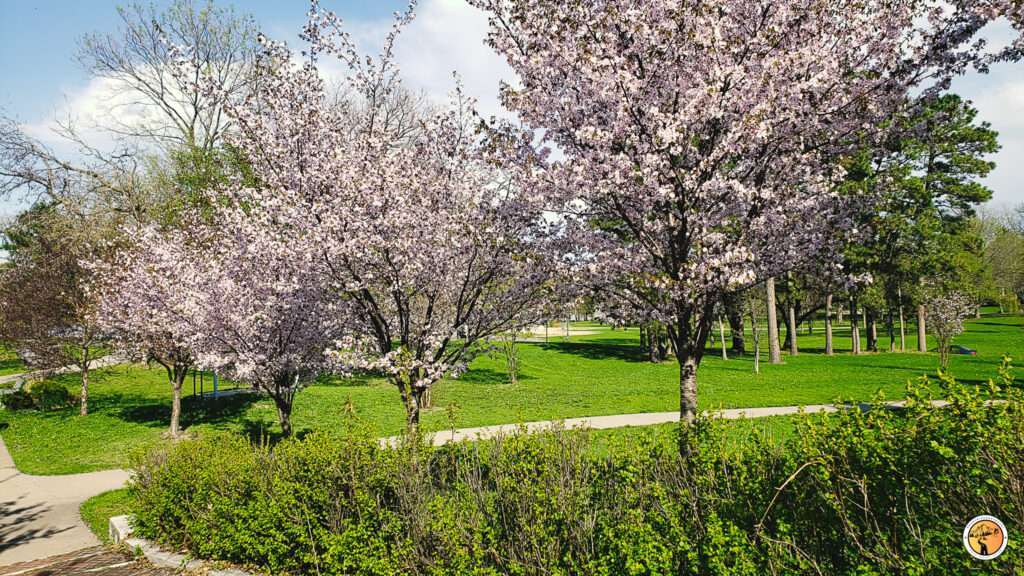
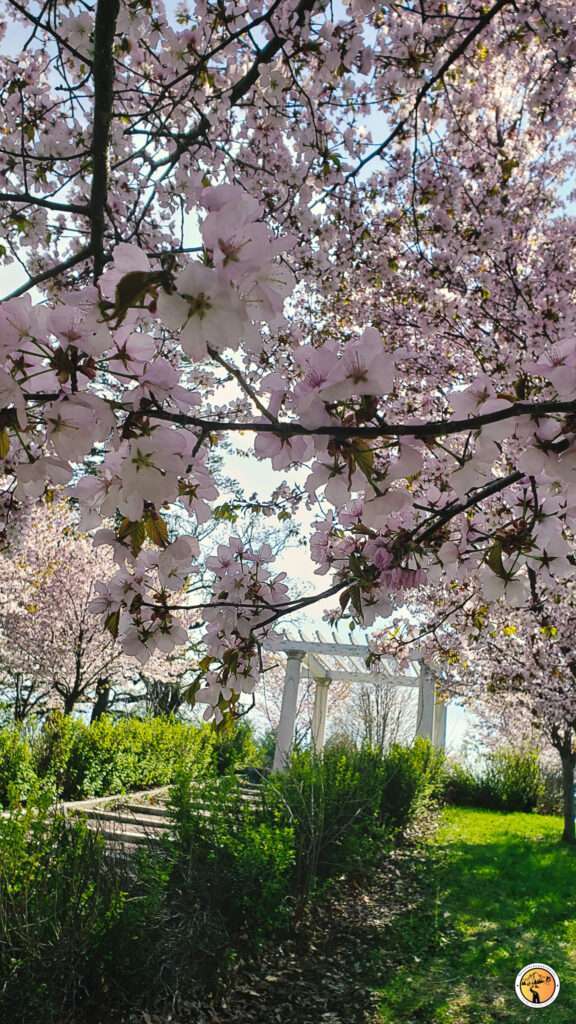
Peak bloom:
Occurs when 70% of the blossoms on the cherry tree are completely open. The peak bloom period also varies in length depending on the weather, but normally lasts an average of 4-6 days.
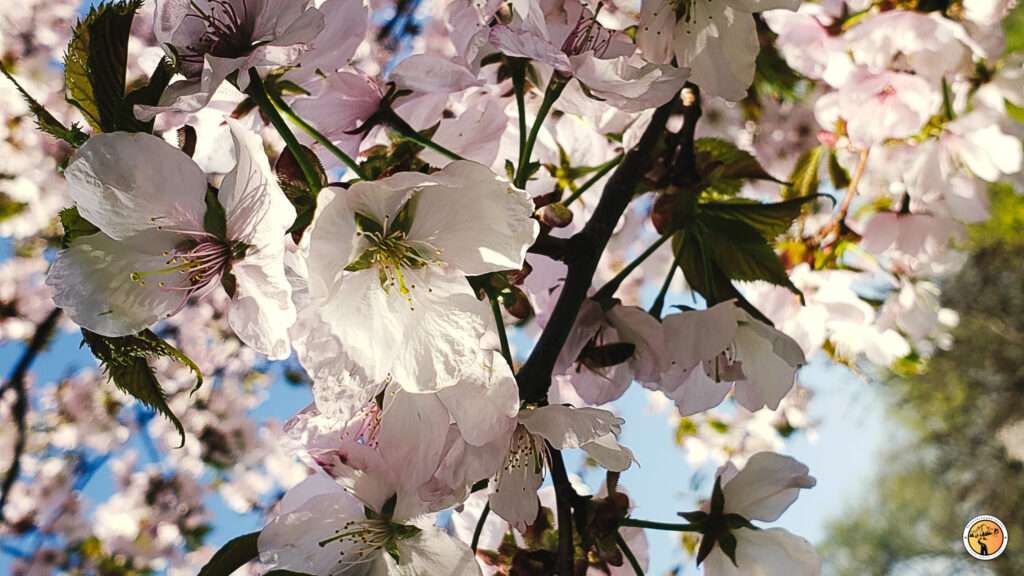
Petals – fall:
This occurs when the petals fall off, and this is typically observed after a spring shower or a windy minnesota day.
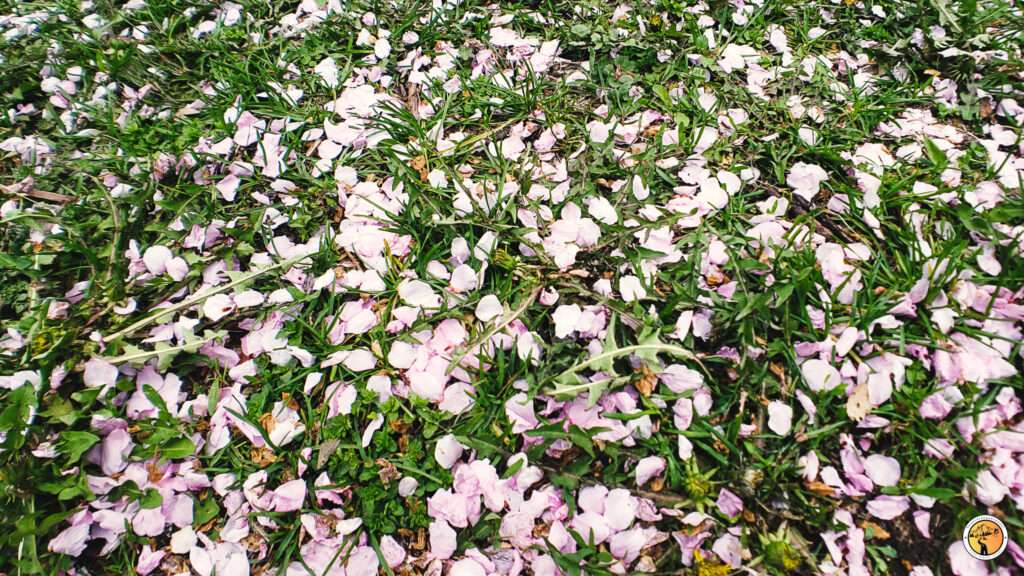
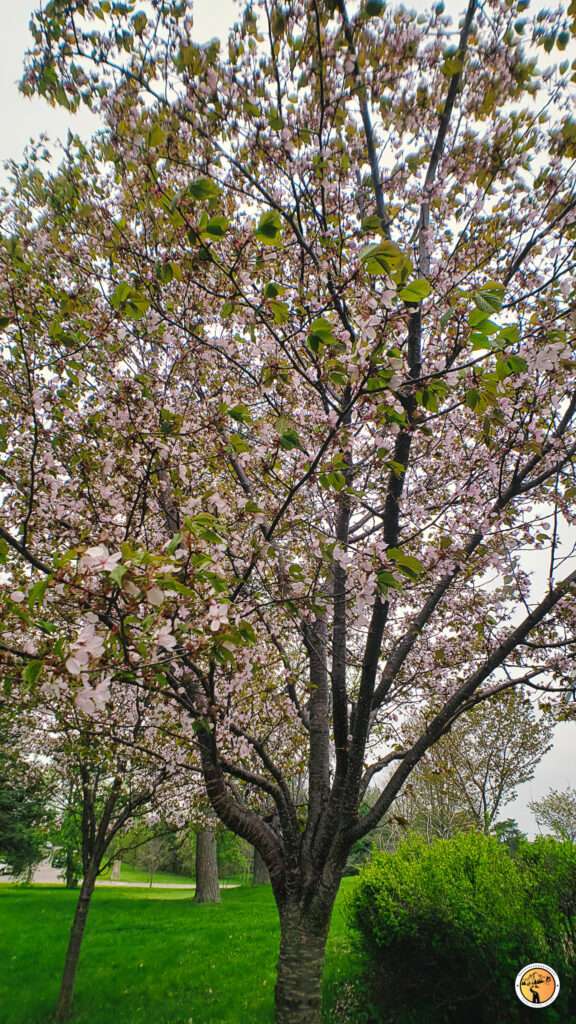
SUMMER:
The leaves turn green. After peak bloom, the cherry blossom petals fall off the tree. From late spring to early fall, the leaves on the tree are green. Some varieties of cherry trees produce small fruit which becomes food for birds and small mammals. But do not confuse them with the cherries that you see in grocery stores.
FALL:
Leaf colors change. When the weather gets colder in the fall, the leaves begin to change color from green to red, orange and yellow and they fall off trees.
WINTER:
During Winter, the cherry tree is inactive or “dormant”. The dormant period begins when the last leaf falls from the tree and ends when the first bud forms in spring.
Phew! There you go… this brings us full cycle.
When do the cherry blossoms bloom?
What is the ideal time to checkout the cherry blossoms in Minnesota?
In Minnesota, there is a very wild fluctuation in the start of spring. So, the overall timeline is much closer to late April and early May.
Interesting Facts about Cherry Blossoms:
- Cherry blossoms are considered the national flower of Japan.
- Neither Japan nor Washington DC is the cherry blossom capital of the world. Rather, of all places, it is Macon, Georgia (!) which is home to 300,000 Yoshino cherry blossom trees. Each year this city holds the International Cherry Blossom Festival.
- Cherry blossom trees are ornamental and not to be confused with cherry trees that produce fruit for eating.
- Cherry blossom petals are edible and they are used in a lot of Japanese teas and sweets. They taste fruity and sweet, sometimes sour, almost like a real cherry.
- There are over 200 varieties of cherry blossom trees. And they are classified based on different characteristics such as number of petals, colour, shape of tree, bloom time, etc
- There are 2 main varieties in the US, which are the Yoshino and Kwanzan. Yoshino trees produce white flowers while the Kwanzan produce pink blossoms.
- The top perfume in the US. is Bath and Body Works’ Japanese Cherry Blossom. Thirty million units of the mixture of cherry blossoms, crisp pears, mimosa petals, and sweet sandalwood are sold each year.
- Cherry Blossoms are said to be native to the Himalayas. According to an Huffington Post article, these flowers likely originated somewhere in Eurasia before migrating to Japan.
- You can get arrested for breaking off a blossom. Removing a blossom or branch is considered vandalism of federal property in Washington, D.C., which can lead to a citation or even an arrest. Use better judgement. 🙂
- There is even Cherry Blossom Ice Cream!! Baskin Robbins Japan released a limited edition cherry blossom ice cream flavor in 2016. Häagen-Dazs also released a short-run cherry blossom pint for Valentine’s Day in the UK in 2018.
Conclusion:
So, next time you are in Como Park during April-May, make a beeline to the Butterfly lot and take time to observe the stunning Sakura. If you are lucky, you just might catch them in bloom! These flowers are extraordinarily rare in the US and a lot of people spent considerable effort, so that future generations such as ours, can enjoy their ephemeral beauty.
We’re thankful for these incredible people who have come before us and who had the foresight to sustain this 120 year old relationship between the two countries – US and Japan. More than that, we thank our Creator for His breathtaking creation!
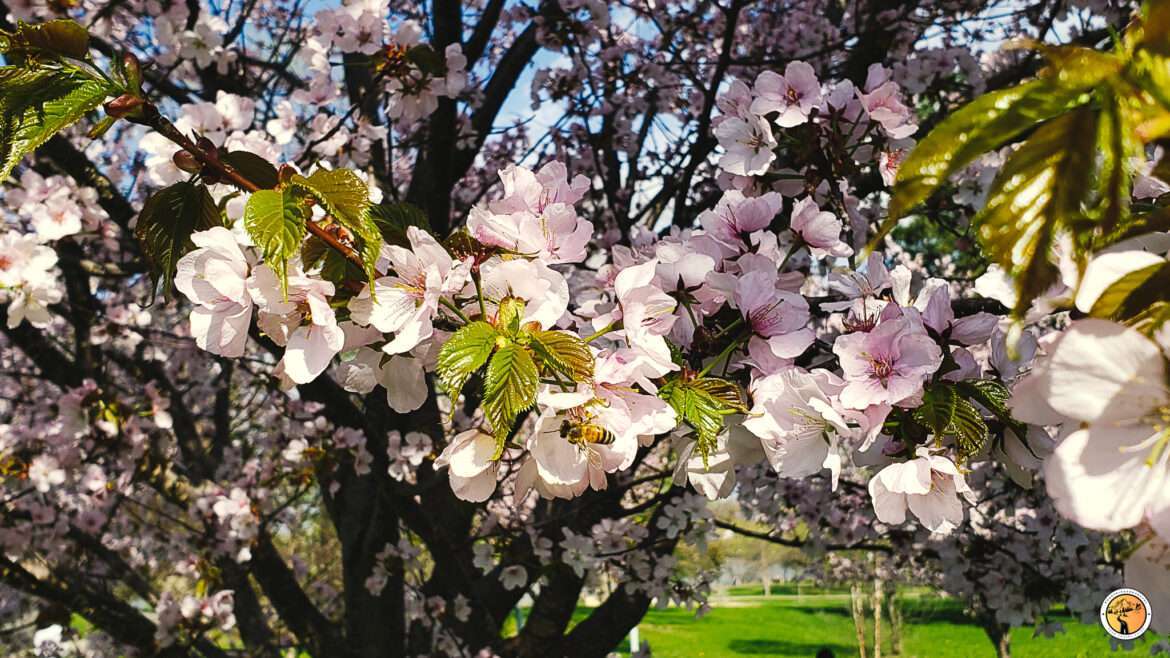
Leave a Reply